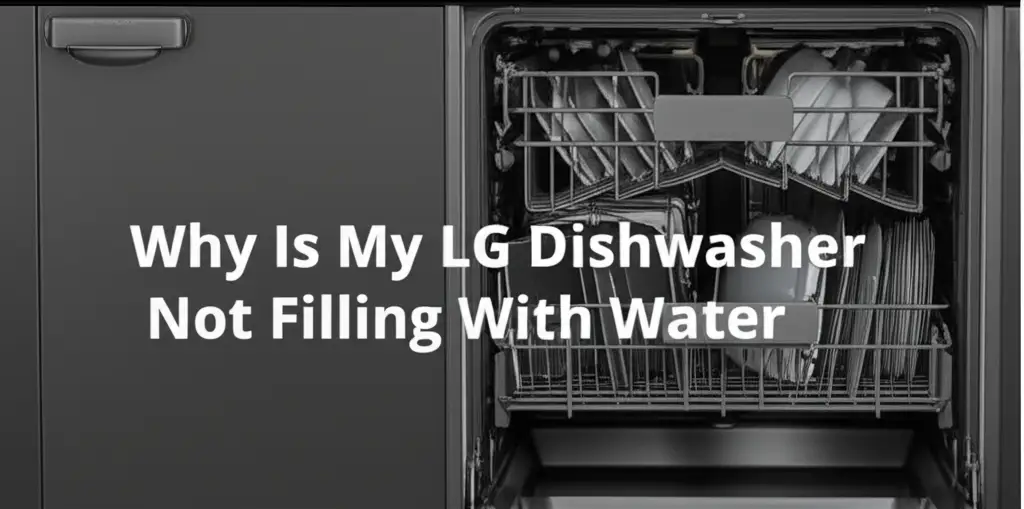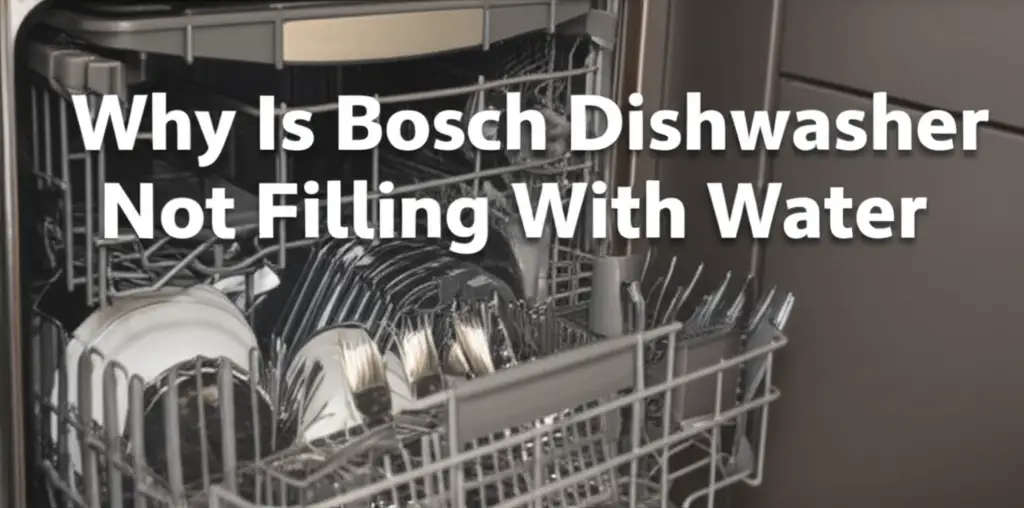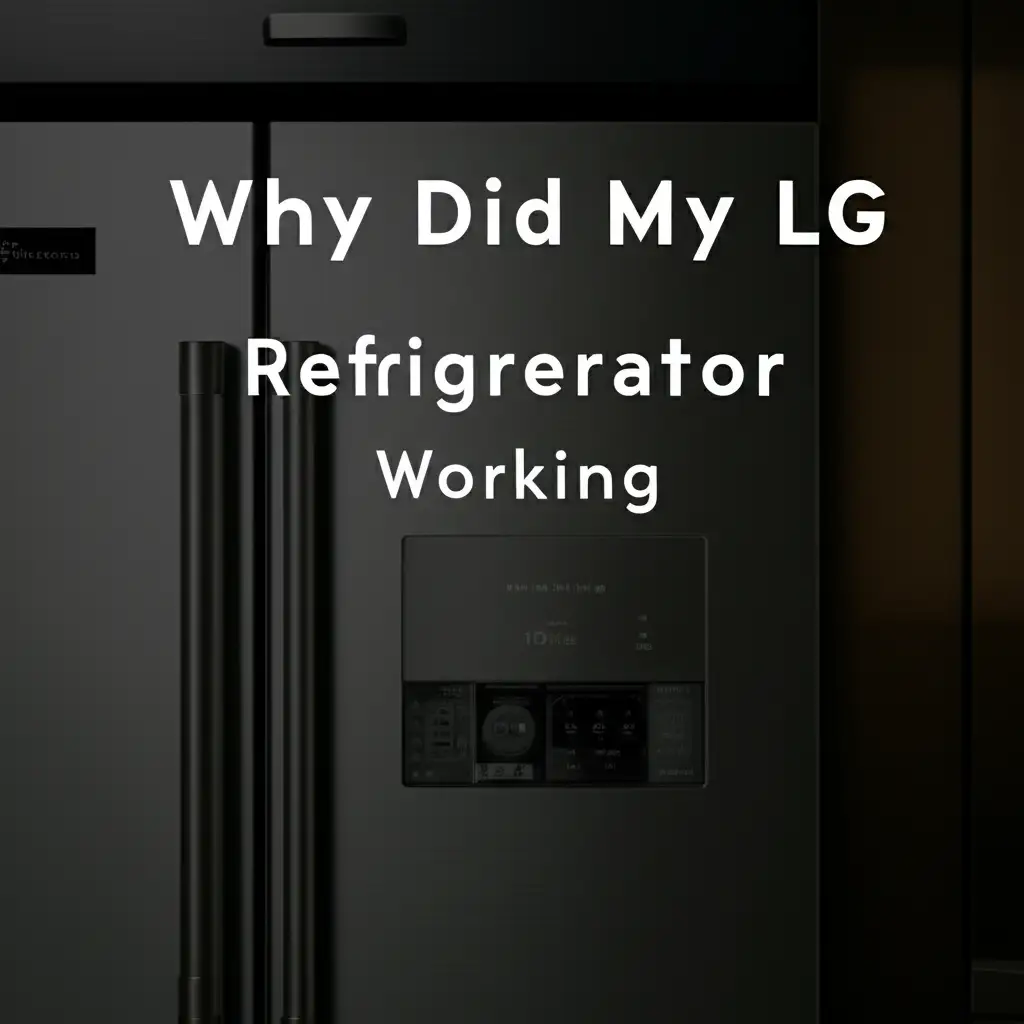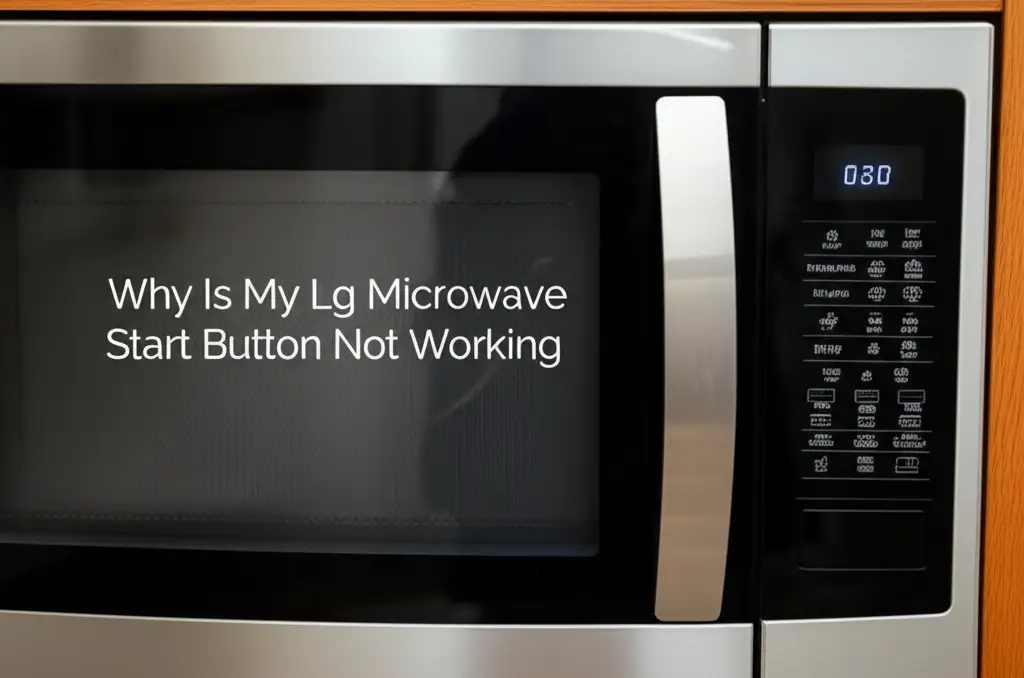· Todd Martin · Dishwasher Repair · 22 min read
Why Does My Frigidaire Dishwasher Stop Mid Cycle
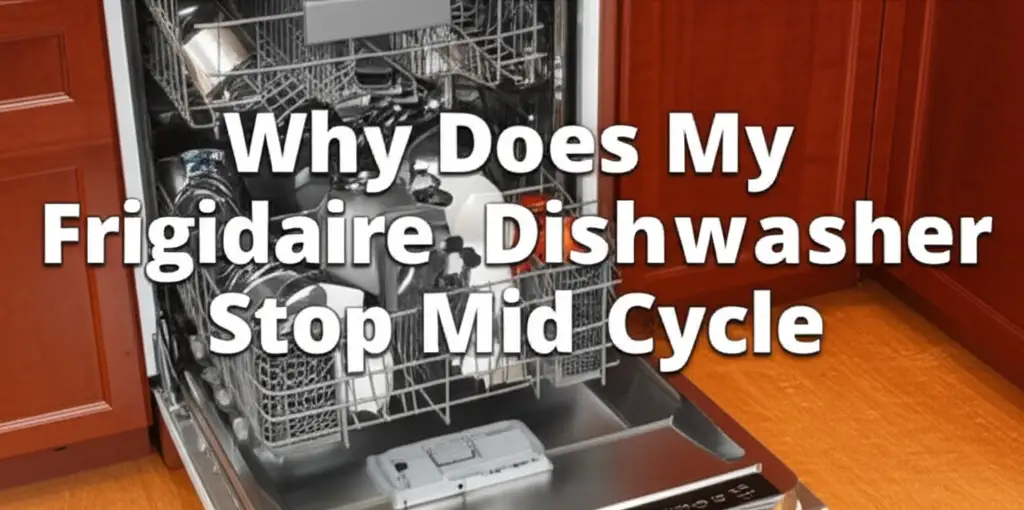
Frigidaire Dishwasher Stopping Mid-Cycle? Get Answers Here!
Imagine this: You load your dirty dishes, select a cycle, and press start. You expect sparkling clean plates a little while later. Instead, your Frigidaire dishwasher stops mid cycle, leaving you with a half-washed load and a puzzle to solve. This is a common frustration for many homeowners. We rely on our dishwashers to simplify our lives, not complicate them.
A dishwasher stopping unexpectedly can point to several underlying problems. It might be a minor issue you can fix yourself. Or, it could signal a bigger problem needing professional help. I want to help you understand what might be going on. This article will explore the most common reasons why your Frigidaire dishwasher stops mid cycle. We will cover simple checks, troubleshooting steps, and when it is time to call an expert. Let us get your dishwasher running smoothly again.
Takeaway
- Check your dishwasher’s power supply first. This includes the circuit breaker and outlet.
- Ensure proper water flow into and out of the appliance. Clogs are a common problem.
- Inspect the door latch for proper closure. A loose door stops the cycle.
- Look for error codes on your control panel. These codes provide clues.
- Clean the filter regularly to prevent drainage issues. This helps your dishwasher work well.
A Frigidaire dishwasher stopping mid cycle often indicates a disruption in power, water supply, or drainage. It can also point to a faulty door latch, a sensor problem, or an issue with the main control board. Identifying the specific error code, if present, is a good first step.
Power Supply Interruption: A Common Culprit
One of the most frequent reasons your Frigidaire dishwasher stops mid cycle involves its power supply. Dishwashers require consistent electrical power to operate. A sudden interruption can cause the machine to halt. This means the cycle cannot continue until power is restored.
Several components can cause power interruptions. Checking these items is usually straightforward. Always ensure your hands are dry before handling electrical parts. Safety comes first when troubleshooting appliances.
Circuit Breaker Trip
Your home’s electrical panel has circuit breakers. These breakers protect your appliances from overloads. If the dishwasher draws too much power, or there is a short, the breaker might trip. This cuts power to the dishwasher.
- Locate your electrical panel: This is often in a basement, garage, or utility closet.
- Find the dishwasher breaker: It is usually labeled. Look for a switch in the “off” or middle position.
- Reset the breaker: Flip the switch firmly to the “off” position, then firmly to the “on” position. Sometimes, you need to turn it off completely before turning it back on.
- Test the dishwasher: Try starting a new cycle. If it trips again, there is a persistent electrical problem. You may also want to read our guide on why your Frigidaire dishwasher has power but won’t start. This gives more context on power-related issues.
Outlet or Cord Problems
The dishwasher plugs into an electrical outlet. Sometimes, the outlet itself can fail. The power cord can also suffer damage. A damaged cord prevents electricity from reaching the appliance.
- Check the outlet: Unplug the dishwasher. Plug another small appliance, like a lamp, into the same outlet. If the lamp does not work, the outlet has no power.
- Inspect the power cord: Look for any visible cuts, fraying, or burn marks. A damaged cord needs replacement. Do not use a damaged cord.
- Secure the connection: Make sure the cord is fully plugged into the outlet. A loose connection can cause intermittent power.
Internal Wiring Issues
Less common, but internal wiring can loosen or corrode. This can happen over time. Loose wires inside the dishwasher can interrupt the power flow. This is a more complex issue.
- Call a technician: If you suspect internal wiring problems, call a qualified appliance repair technician. Opening the dishwasher to check internal wiring requires caution. It also needs knowledge of electrical systems. Do not attempt this unless you have electrical repair experience.
Addressing power issues often solves the mid-cycle stop. If power is constant and correct, other problems might exist.
Water Supply Issues: Is Your Dishwasher Getting Enough?
For a Frigidaire dishwasher to complete a cycle, it needs a continuous supply of water. If the water flow is interrupted or insufficient, the dishwasher will stop. It stops to prevent damage and to ensure proper cleaning. Water supply problems are quite common. They are often easy to diagnose and fix.
Several components work together to bring water into the dishwasher. A fault in any part can cause a problem. Understanding these parts helps you pinpoint the issue.
Clogged Water Inlet Valve
The water inlet valve controls the flow of water into the dishwasher. This valve opens to let water in during fill cycles. It closes to stop the flow. If this valve becomes clogged with mineral deposits or debris, it cannot open fully. This restricts water entry.
- Check water pressure: Before checking the valve, ensure your home has good water pressure. Low house water pressure affects all water-using appliances.
- Locate the inlet valve: It is usually at the bottom front of the dishwasher. You will need to pull the dishwasher out to access it.
- Inspect the screen: The inlet valve has a screen filter where the water hose connects. Turn off your water supply. Disconnect the water hose from the valve. Check the screen for clogs. Clean it if necessary.
- Test the valve: You can test the valve with a multimeter for electrical continuity. If it is not getting power or is mechanically stuck, it might need replacement. For more details on water supply problems, you can refer to our article on why your Frigidaire dishwasher is not filling with water.
Kinked or Damaged Water Supply Hose
The hose connects your dishwasher to your home’s water line. A kink or damage to this hose will restrict water flow. This is a simple issue to check.
- Pull out the dishwasher: Gently slide the dishwasher out from its cabinet.
- Examine the hose: Look at the water supply hose behind the dishwasher. Ensure it is not bent sharply or crushed. Straighten any kinks.
- Check for leaks: Look for any signs of water leaks or cracks in the hose. A leaking hose needs immediate replacement.
Malfunctioning Float Switch
Most dishwashers have a float switch. This switch detects the water level inside the tub. When water fills to the correct level, the float rises. It activates a switch, telling the control board to stop filling. If the float switch gets stuck or malfunctions, it might incorrectly signal low water. Or, it might fail to signal sufficient water. This can cause the dishwasher to stop prematurely.
- Locate the float: It is usually a small plastic cup or cylinder at the bottom of the dishwasher tub.
- Check its movement: Manually lift the float up and down. It should move freely.
- Clean around the float: Food debris or grime can trap the float. Clean the area thoroughly.
- Test the switch: If the float moves freely but the problem persists, the switch itself might be faulty. A multimeter can test its continuity.
Proper water supply is essential. If these checks do not resolve the issue, other internal components may be involved.
Drainage System Blockages: Why Water Stalls Your Cycle
A Frigidaire dishwasher needs to drain water effectively throughout its cycle. This happens several times during washing and rinsing phases. If water cannot drain properly, the dishwasher may stop mid-cycle. It stops because sensors detect standing water. This prevents overflowing or further issues. Blockages in the drainage system are very common culprits. They are often due to food debris.
Understanding the components of your dishwasher’s drainage system is helpful. This allows you to identify the specific blockage point. Regular cleaning can prevent many of these issues.
Clogged Dishwasher Filter
Most dishwashers have a filter at the bottom of the tub. This filter catches food particles and debris. This prevents them from recirculating or clogging the drain pump. Over time, this filter can become heavily clogged. A clogged filter restricts water flow during drainage.
- Locate the filter: It is usually located at the bottom of the dishwasher tub, below the spray arm. It might be a cylindrical or flat screen filter.
- Remove and clean: Twist and lift out the filter assembly. Rinse it under running water. Use a brush to remove stuck-on food particles or grease. You can use a mild dish soap if needed.
- Reinstall the filter: Make sure it is properly seated and locked back in place. Regular cleaning of this filter is crucial for efficient drainage. For insights into standing water issues, consult our guide on why your Frigidaire dishwasher is holding water in the bottom.
Kinked or Clogged Drain Hose
The drain hose carries wastewater from the dishwasher to your sink drain or garbage disposal. Kinks in the hose can block water flow. Food debris or grease can also build up inside the hose, creating a clog.
- Pull out the dishwasher: Gently slide the dishwasher away from the wall.
- Inspect the drain hose: Check the hose for any visible kinks or bends. Straighten them out.
- Look for blockages: Disconnect the drain hose from the dishwasher and the sink/disposal connection. Use a flashlight to look inside the hose for blockages. You can use a long brush or snake to clear any debris.
- Check air gap (if present): Some installations include an air gap on the sink top. This prevents dirty water from flowing back into the dishwasher. Ensure it is clear of debris.
Malfunctioning Drain Pump
The drain pump is an electric motor that forces water out of the dishwasher. If the pump motor fails or an object jams its impeller, water will not drain. This causes the cycle to stop.
- Listen for the pump: During the drain cycle, listen for the pump motor. A humming sound without water movement suggests a jam. No sound at all might indicate a faulty motor.
- Check for foreign objects: Turn off power to the dishwasher. Remove the filter and possibly the pump cover (consult your manual for access). Look for broken glass, bones, or other objects jamming the impeller.
- Test the pump: If no objects are present, the pump motor itself might be faulty. Testing the pump usually requires a multimeter and some disassembly. This might be a job for a professional.
Effective drainage is vital. Addressing these blockage issues often resolves mid-cycle stoppages related to water removal.
Faulty Door Latch or Switch: Security System Glitches
The door latch and its associated switch are critical safety features in any dishwasher. Your Frigidaire dishwasher will not operate or will stop mid-cycle if it detects that the door is not securely closed and latched. This prevents water from spilling out during operation. It also protects users from hot water and moving parts.
A problem with the door latch assembly or the door switch is a very common reason for a dishwasher to stop. These parts can wear out or become misaligned over time. They are worth checking early in your troubleshooting process.
Misaligned or Damaged Door Latch
The door latch physically secures the dishwasher door. It ensures a tight seal. If the latch itself is bent, broken, or misaligned, it might not engage properly. Even if you push the door shut, the latch might not fully lock into place.
- Inspect the latch: Open your dishwasher door. Look closely at the latch mechanism on the door edge and the strike plate on the dishwasher frame.
- Check for damage: Look for any visible cracks, bends, or missing pieces on either part. A damaged latch needs replacement.
- Test the alignment: Gently try to wiggle the door when it is supposedly latched. If it feels loose or moves easily, the latch might not be fully engaging. Sometimes, the strike plate can be adjusted slightly. Consult your owner’s manual for specific adjustment instructions.
Faulty Door Switch
Inside the door latch assembly, there is a small electrical switch (or switches). This switch detects whether the door is fully closed and latched. When the door closes, the switch completes an electrical circuit, telling the control board it is safe to run. If this switch fails, it will not send the “closed” signal. The dishwasher will not start or will stop during a cycle.
- Test the switch (advanced): Testing a door switch usually requires a multimeter. You would need to access the switch, often located within the door or behind the control panel. With the power off, you can test for continuity. A good switch shows continuity when activated and no continuity when released.
- Listen for a click: Sometimes, you can hear a faint click when you close the door, indicating the switch is activating. Absence of a click might suggest a problem.
- Jiggling the door: If the dishwasher stops mid-cycle, try gently pushing on the door or jiggling it. If the cycle resumes, it strongly suggests a problem with the latch or switch connection. However, this is not a permanent fix.
Gasket Issues
While not directly part of the latch, a worn or dirty door gasket can affect the seal. A poor seal might cause the dishwasher to detect a leak or an improperly closed door. It may then stop.
- Inspect the gasket: Check the rubber seal around the entire perimeter of the door. Look for cracks, tears, or areas where it might be pulling away.
- Clean the gasket: Food debris or soap scum can build up on the gasket. This can prevent a tight seal. Clean it with a damp cloth and mild detergent.
Ensuring the door latches securely and the switch works correctly is a critical step. If your Frigidaire dishwasher starts and then stops, a faulty door latch or switch is a prime suspect. You can learn more about this specific symptom in our article: why does my Frigidaire dishwasher start and then stop.
Control Board and Sensor Malfunctions: The Brains of the Operation
Modern Frigidaire dishwashers rely on sophisticated electronics and sensors. These components manage the entire washing process. They ensure proper water levels, temperatures, and cycle progression. If the main control board (the “brain”) malfunctions or a sensor sends incorrect information, the dishwasher can stop mid-cycle. It stops because it receives conflicting or faulty instructions.
Diagnosing these issues can be more challenging than mechanical problems. Often, they require technical knowledge or diagnostic tools. However, understanding their role helps you determine if professional help is needed.
Faulty Main Control Board
The main control board is the central processing unit of your dishwasher. It receives signals from sensors. It then sends commands to components like the pump, motor, and heating element. A fault on the circuit board can lead to erratic behavior. This includes stopping mid-cycle, freezing, or not responding to commands.
- Look for error codes: Often, a faulty control board will trigger an error code on the display. This code provides a starting point for diagnosis. Check your owner’s manual for error code meanings.
- Reset the dishwasher: Sometimes, a temporary glitch can be fixed by resetting the dishwasher. Turn off the power at the circuit breaker for 5-10 minutes. Then turn it back on.
- Irregular behavior: If your dishwasher shows other random problems, like lights flickering, buttons not responding, or cycles skipping, it points towards a control board issue. Replacement of the control board is often required for these problems. This is a complex repair usually best left to a professional.
Malfunctioning Water Level Sensor (Float Switch)
As mentioned earlier, the float switch primarily ensures the correct water fill level. However, a faulty float switch can also cause problems during the wash cycle. If it sticks or sends an intermittent “full” or “empty” signal, the control board might halt the cycle. It stops thinking there is too much or too little water.
- Clean the float: Ensure the float moves freely and is clean of debris.
- Check wiring: Inspect the wires connected to the float switch for damage or loose connections.
Turbidity Sensor Problems
Many modern Frigidaire dishwashers use a turbidity sensor. This sensor detects how dirty the water is. It helps the dishwasher decide how long to wash and how many rinses are needed. If this sensor malfunctions, it might misread the water’s cleanliness. This could cause the dishwasher to stop prematurely. It might think the dishes are clean when they are not, or vice versa.
- Sensor location: The turbidity sensor is usually located near the drain pump or sump area at the bottom of the tub.
- Clean the sensor: It can get coated with food particles or detergent residue. Gently clean the sensor eye with a soft cloth or brush.
- Error codes: A faulty turbidity sensor might trigger a specific error code.
Thermal Fuse Failure
The thermal fuse is a safety device. It protects the dishwasher from overheating. If the dishwasher motor or heating element overheats, the thermal fuse blows. This cuts power to the entire unit, stopping the cycle and preventing damage.
- Causes of overheating: Overheating can be caused by a faulty heating element, a struggling wash motor, or poor ventilation.
- Replacement: A blown thermal fuse cannot be reset. It must be replaced. Before replacing, it is important to find the cause of the overheating. Replacing the fuse without addressing the root cause will likely lead to it blowing again.
Issues with the control board or sensors are often indicated by specific error codes. Checking your owner’s manual for these codes is a crucial first step. If your LG dishwasher is stopping mid-cycle, you might find some similar troubleshooting ideas in our guide about why your LG dishwasher keeps stopping mid-cycle.
Overheating or Motor Problems: Protecting Your Appliance
Your Frigidaire dishwasher relies on its main wash motor to circulate water and its heating element to heat the water for washing and drying. If either of these components experiences an issue that causes overheating or malfunction, the dishwasher’s safety mechanisms will kick in. This usually means the dishwasher stops mid-cycle to prevent damage or fire hazards. These are more significant issues.
Understanding these components can help determine if a professional service call is necessary. Attempting repairs on motors or heating elements can be dangerous without proper electrical knowledge.
Main Wash Motor Malfunction
The main wash motor powers the pump. This pump circulates water through the spray arms. If the motor struggles, overheats, or fails, the wash cycle cannot continue. This will cause the dishwasher to stop.
- Listen for unusual sounds: A failing motor might make grinding, buzzing, or whining noises before stopping.
- Check for obstructions: Sometimes, small objects like broken glass or a piece of cutlery can get past the filter and jam the motor’s impeller. This causes the motor to seize or overheat. Accessing the impeller usually requires removing the pump assembly from the bottom of the dishwasher.
- Motor overheating: If the motor overheats, a thermal cut-out switch might trip. This temporarily shuts down the motor. Once it cools, it might reset. However, persistent overheating indicates a deeper problem with the motor or its components.
Faulty Heating Element
The heating element is responsible for heating the water to the optimal temperature for cleaning. It also helps with the drying cycle. If the heating element is faulty, it can draw too much power, short circuit, or simply fail to heat. Overheating of the element itself can cause the dishwasher to stop as a safety measure.
- Check for visual damage: Sometimes, you can see visible corrosion or burn marks on the heating element at the bottom of the dishwasher tub.
- Test for continuity: Using a multimeter, you can test the heating element for continuity. No continuity means the element is likely broken. This component usually requires professional replacement.
Thermal Cutout Switch
Many dishwashers have a thermal cutout switch, separate from the thermal fuse. This switch monitors the temperature of certain components, like the motor. If these components get too hot, the thermal cutout will trip. This cuts power to the affected part or the entire dishwasher.
- Resetting: Unlike a thermal fuse, a thermal cutout switch is often resettable. It will automatically reset once the component cools down. If it keeps tripping, it means something is consistently overheating.
- Find the cause of overheating: The focus should be on why the component is overheating. Is it a failing motor drawing too much current? Is it a faulty heating element? Is there a blockage causing the motor to work harder?
Problems with the motor or heating element are often serious. They can be dangerous if not handled correctly. If you suspect these issues, it is best to consult a certified appliance technician. They have the tools and experience to diagnose and safely repair these parts.
Error Codes: Decoding Your Frigidaire’s Messages
Modern Frigidaire dishwashers are equipped with diagnostic systems. These systems display error codes on the control panel when a fault is detected. An error code is the dishwasher’s way of telling you what went wrong. When your Frigidaire dishwasher stops mid cycle, checking for an error code is one of the most important first steps. It can pinpoint the exact cause.
Understanding what these codes mean can save you time and money. It guides you towards the correct troubleshooting steps. Always refer to your specific Frigidaire dishwasher model’s owner’s manual. Codes can vary slightly between models.
How to Check for Error Codes
The method for checking error codes depends on your dishwasher model.
- Digital Display: If your dishwasher has a digital display, the error code will usually appear directly on the screen. It might be a letter and a number, like “i20” or “F1.”
- Flashing Lights: Some models use a series of flashing lights on the control panel to indicate a code. For example, a certain light might flash a specific number of times, pause, and then repeat. You will need your manual to interpret these patterns.
- Recent Models: Newer Frigidaire models might even display descriptive messages instead of just codes.
Common Frigidaire Dishwasher Error Codes and Their Meanings
While codes vary, some are very common for mid-cycle stoppages.
- i10/iF0/iFo/i20: These codes often relate to water supply issues.
- i10 or iF0/iFo: Not enough water entering the dishwasher. Check the water supply valve, water pressure, and the inlet hose.
- i20: Draining problem. Water is not draining properly. This points to a clogged filter, drain hose, or a faulty drain pump.
- i30: Leak detection or overflow. Water has been detected in the base pan. This usually triggers a pump-out sequence and stops the cycle. Look for leaks from hoses, pump seals, or the tub itself.
- i40/i50: Sensor or motor issues.
- i40: Indicates a problem with the water level sensor or a pressure sensor.
- i50: Points to a problem with the wash motor or drain pump motor. This could mean a motor jam or an electrical fault within the motor.
- i60: Heating element issues. The dishwasher is not reaching the desired water temperature. This suggests a problem with the heating element or its thermostat.
- iF1: Overflow error or leak. Similar to i30, this indicates water in the base pan.
- iC0/iC1: Control board communication errors. These codes usually mean the main control board is faulty or has communication problems with other components. A complete reset might clear it temporarily.
- iD0/iE0: Door switch issues. The dishwasher detects that the door is open or not properly latched. This aligns with a faulty door latch or switch.
What to Do After Finding a Code
- Consult Your Manual: Always refer to your Frigidaire dishwasher’s owner’s manual first. It has the most accurate information for your specific model.
- Perform Recommended Steps: The manual will often provide simple troubleshooting steps for each code.
- Reset: If the code persists after initial checks, try resetting the dishwasher by turning off the circuit breaker for a few minutes.
- Professional Help: If the code indicates a complex internal component failure (like a control board, motor, or heating element) or if simple troubleshooting does not work, it is time to call a qualified appliance technician.
Error codes are powerful diagnostic tools. They save you from guessing about the problem. Taking the time to understand and act on them helps get your Frigidaire dishwasher back on track. If you need to cancel a cycle because of an error or for other reasons, our guide on how to cancel a Frigidaire dishwasher cycle can provide helpful steps.
User-Related Factors: Simple Habits That Can Cause Stops
Sometimes, the reason your Frigidaire dishwasher stops mid cycle is not a complex mechanical or electrical fault. Instead, it relates to how the dishwasher is used or loaded. These are often simple, user-related factors that you can easily correct. Being aware of these can save you a service call. They also improve your dishwasher’s performance and longevity.
Good loading habits and proper cycle selection are key to preventing these types of stoppages. Your dishwasher is designed to work within certain parameters. Deviating from these can cause issues.
Overloading the Dishwasher
Filling your dishwasher too full is a common mistake. When overloaded, water cannot circulate properly. Detergent might not reach all dishes. More importantly, it can obstruct the spray arms. If the spray arms hit dishes, they can get stuck or slow down. This can signal to the dishwasher that something is wrong. The dishwasher may then stop the cycle to prevent motor strain or damage.
- Proper loading: Follow the guidelines in your owner’s manual for loading. Ensure spray arms can spin freely. Make sure dishes do not block the detergent dispenser.
- Avoid cramming: Do not force too many dishes into the racks. It is better to run two smaller loads than one overloaded one.
- Check spray arm rotation: Before starting a cycle, manually spin the upper and lower spray arms. They should rotate freely without hitting any dishes.
Incorrect Cycle Selection
Choosing the wrong wash cycle for the load can sometimes cause problems. For example, selecting a very light cycle for heavily soiled dishes might mean the dishwasher struggles. It might take longer or sensors might detect that the dishes are not getting clean. Some dishwashers might then extend the cycle or even stop.
- Match cycle to load: Use a “Heavy Wash” for pots and pans. Use “Normal” for everyday loads. Use “Light” or “Quick” for lightly soiled items.
- Read the manual: Familiarize yourself with the different cycles your Frigidaire dishwasher offers. Understand what each cycle is designed for.
Improper Detergent Use
Using too much detergent, too little detergent, or the wrong type of detergent can impact performance. Excessive suds can confuse water level sensors. Too little detergent means dishes are


